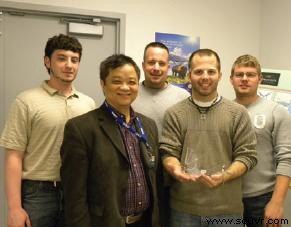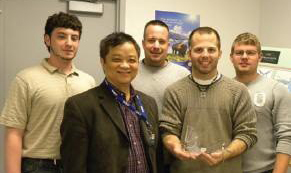In 2008, the U.S. military's UAVs performed 400,000 hours of missions. The U.S. Customs and Border Protection alone used more than 200 UAVs for border surveillance. Although drones are capable of these tasks, drones themselves cannot fly in urban and indoor environments. Future warfare is mainly based on anti-terrorism, and it is often necessary to perform tasks such as intelligence collection, surveillance, and reconnaissance in a small environment.

In order to meet this challenge, micro-aircraft (MAV) was born. It is not only suitable for military activities, but also for dangerous civilian situations, including searching for terrorists in buildings and caves; detecting damaged nuclear power The radiation situation of the factory; and the search for survivors in the collapsed coal mine, etc.
Wright State University has hired aerodynamics and computational fluid dynamics expert Dr. Huang to be responsible for the research and development of micro-aircraft for undergraduates and graduate students. Entrusted by the US Air Force, Dr. Huang led his own R&D team to develop a new type of micro-aircraft by simulating dragonflies in accordance with the principles of bionics. The picture shows the prototype of the aircraft. When making the model, Dr. Huang chose the ProJet 3000 HD professional stereo printer. In the process of improving the design of micro-aircraft, the stereo printer has played an important role.

The latest type of micro-aircraft developed by the project is similar in size to a bird and is controlled by a remote control device. The ultra-small parts of the prototype of the product are all made with ProJet 3000, which has the characteristics of fast speed, strong maneuverability and light weight. On the basis of previous successful experience, the team continued to work hard to develop a new generation of ultra-micro aircraft. Under the leadership of Dr. Huang, the team is working on designing a smaller aircraft that can be accommodated in a human palm and weighs only 5 grams.
In addition, the R&D team at Wright State University also plans to design an aircraft that is exactly the same as a dragonfly in the near future.
![]() Tel:+86 135 7086 9158
Tel:+86 135 7086 9158![]() Tel:+86 135 7086 9158
Tel:+86 135 7086 9158

